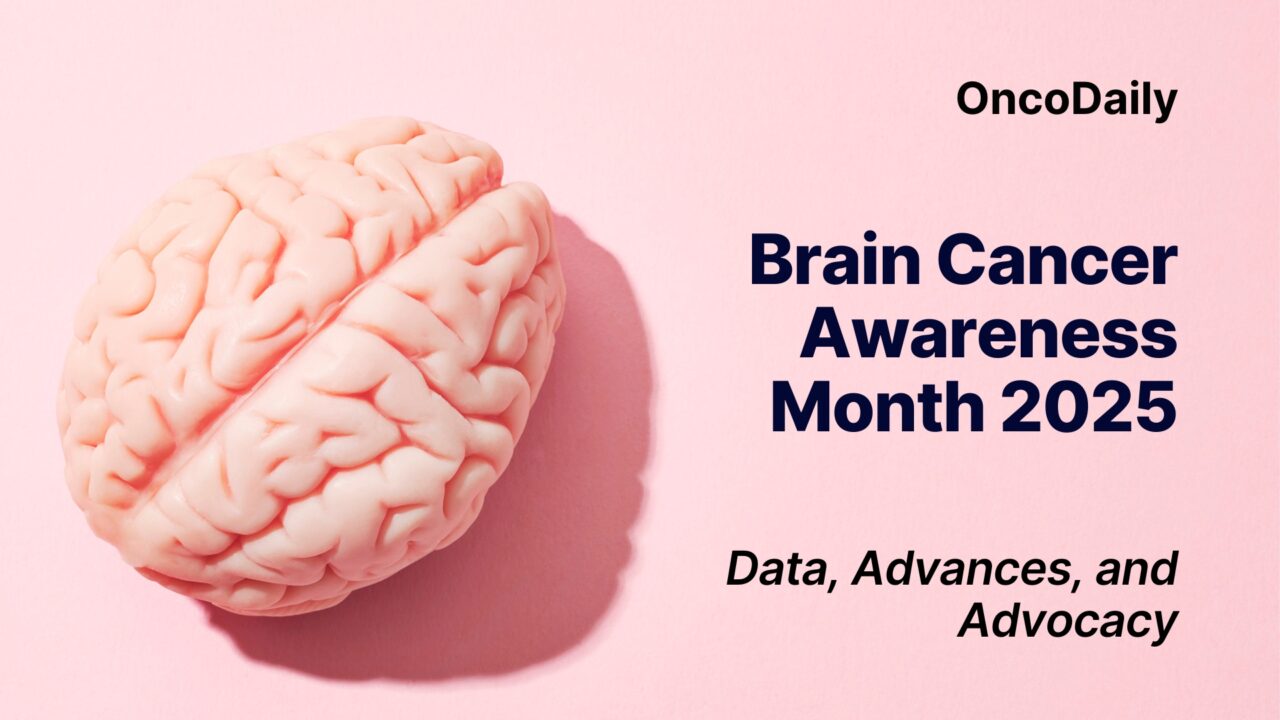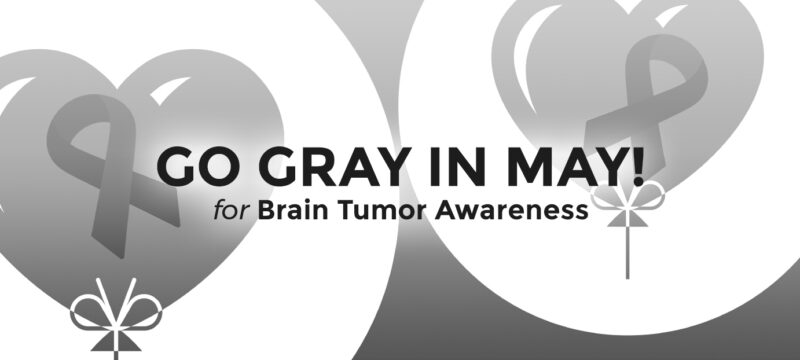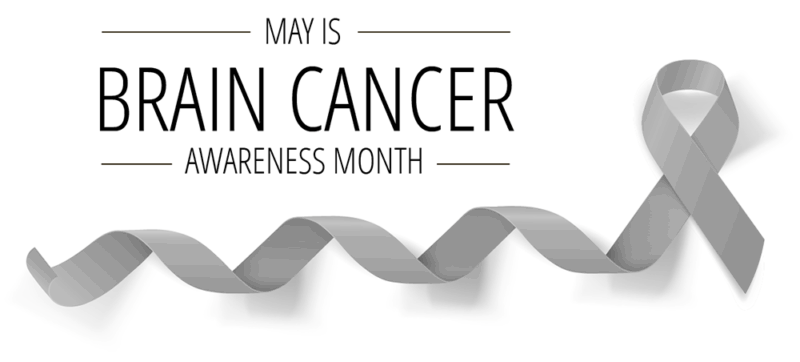
Brain Cancer Awareness Month 2025: Data, Advances, and Advocacy
Brain Cancer Awareness Month (May) unites clinicians and researchers in spotlighting brain tumors – a leading cause of cancer death with few effective therapies. In addition to honoring patients and survivors, the month drives focus on early diagnosis, research funding, and policy. Health professionals are urged to “go gray” (#GrayMay) and join campaigns to raise awareness of symptoms, promote biomarker testing, and boost clinical trial enrollment.

Key goals include:
- Education: Disseminate up-to-date brain tumor knowledge in clinics and communities (signs, imaging, pathology).
- Research engagement: Recruit patients to trials (e.g. GBM-AGILE adaptive platform) and share new findings.
- Fundraising & policy: Support events (walks, rides, “50-Mile May” challenges) and advocate for legislation (e.g. BRAIN Act) to increase brain tumor research budgets.
These efforts aim to improve the grim outlook of malignant brain cancers (median survival ~12–18 months for glioblastoma) by accelerating breakthroughs and community support.
Epidemiology & Trends
- Global burden: Brain and other CNS tumors are relatively rare but deadly. In 2020 there were ≈308,000 new brain/CNS tumor cases and 251,000 deaths worldwide (∼1.6% of all cancers and 2.5% of cancer deaths). They rank ~19th in incidence but 12th in mortality globally.
- US incidence: In 2025 the National Brain Tumor Society projects ≈93,000 new US brain tumor diagnoses (all grades and ages), including benign and malignant. Roughly 24,000 of these will be malignant primary brain tumors. About 18,300 Americans are expected to die from malignant brain tumors in 2025. The lifetime risk of a brain/CNS cancer in the US is ≈0.6%.
- Demographics: Incidence rises with age. Glioblastoma (GBM) – the most aggressive adult brain tumor – has a median diagnosis age ~65 years and is slightly more common in men. Pediatric brain tumors are the #1 cancer in children; ~5,230 new pediatric cases (age 0–19) occur in the US in 2023. Black Americans have higher overall brain tumor rates than Whites.
- Types and survival: In US adults the most common primary brain tumors are meningiomas (≈46% of cases), followed by glioblastoma (16%) and pituitary adenomas (15%). Among malignant tumors, gliomas predominate. Five-year survival varies by pathology and age: overall 5-year survival for malignant brain tumors is only ~36% (far lower than many cancers), whereas benign tumors (e.g. low-grade meningiomas) have much better outcomes. For example, GBM has ~5–10% five-year survival in adults. Pediatric tumors have higher survival (≈76% for malignant pediatric brain tumors), but are still the leading cause of childhood cancer death.
Advances in Diagnostics and Research
Early and accurate diagnosis of brain tumors is improving thanks to advanced imaging and liquid biopsy research.
- Imaging and AI: High-resolution MRI remains fundamental. Advanced MRI techniques (diffusion, perfusion, spectroscopy) together with AI‐driven radiomic analysis can noninvasively grade and characterize tumors. For example, a recent study used machine learning on MRI radiomic features to predict glioma grade with AUC ≈0.90. AI tools are increasingly used for surgical planning (segmentation of tumor margins) and prognostic modeling, aiding personalized treatment planning.
- Liquid biopsy: Research into blood or cerebrospinal fluid (CSF) biomarkers is expanding. Studies show that tumor-derived DNA (ctDNA) and circulating tumor cells (CTCs) can sometimes be detected from brain tumors. Importantly, CSF-based liquid biopsies often outperform blood tests: for gliomas, sensitivity of ctDNA detection in CSF exceeds that in plasma. Emerging assays (cfDNA mutation profiling, methylation patterns, microRNAs) are under investigation for early detection and monitoring of recurrence. While not yet standard care, these techniques hold promise for noninvasive tumor surveillance in the future.
Therapeutic Advances and Clinical Trials
Treatment of brain cancer has lagged behind other cancers, but recent years have seen encouraging developments:
- Immunotherapy and CAR-T: Glioblastoma has proved highly immunosuppressive, so immune checkpoint inhibitors (e.g. PD-1 antibodies) have not improved survival in large trials. (For example, CheckMate-498/548 showed no OS benefit from nivolumab added to standard therapy.) However, novel cell therapies are making headlines. Early-phase trials of CAR-T cells targeting glioma antigens have shown dramatic responses. In a Mass General Hospital study, a new CAR-T (“CARv3-TEAM-E”) achieved “dramatic” tumor shrinkage in recurrent GBM patients – one patient had near-complete regression within days. Similarly, Penn Medicine’s dual-target CAR-T (targeting EGFR and IL13Rα2) given into CSF shrank tumors in all six treated GBM patients, with some sustained responses over months. These results, while preliminary, highlight cell therapy’s potential; multiple phase I trials (ongoing via NCT numbers and platforms like GBM-AGILE) are actively enrolling.
- Oncolytic viruses: Engineered viruses that infect tumor cells are another strategy. In Japan, a modified HSV-1 virus (G47Δ) was approved in 2021 for recurrent GBM. A phase II trial of G47Δ reported a 1-year survival of 84% (median OS ~20 months from treatment) in treated GBM patients, far exceeding historical controls; this success led to its regulatory approval. Likewise, a US study combining an oncolytic adenovirus (DNX-2401) with pembrolizumab in recurrent GBM was safe and showed encouraging activity: 12-month OS was ~53% (vs 20% expected), with over half of patients achieving stable disease or better. These trials suggest oncolytic immunotherapy can “heat up” the cold GBM microenvironment and are sparking new combination studies.
- Tumor Treating Fields (TTFields): This FDA-approved device (Optune) delivers low-intensity electric fields to disrupt cancer cell division. The Phase III EF-14 trial (for newly diagnosed GBM) showed that adding TTFields to temozolomide improved median OS to ~20.9 months. TTFields are now part of the standard regimen in the US. Ongoing studies are assessing TTFields in other tumor types and in combination with systemic therapies.
- Targeted therapies: Personalized targeted drugs are coming. In August 2024 the FDA approved vorasidenib, an inhibitor of mutant IDH1/2, for IDH1/2‑mutant grade 2 gliomas (astrocytoma/oligodendroglioma) after surgery. Trials have shown that vorasidenib (and ivosidenib) dramatically lower the oncometabolite 2-HG in IDH-mutant gliomas. In pediatrics, dabrafenib+trametinib (BRAF/MEK inhibitors) gained FDA approval (Mar 2023) for BRAF V600E–mutant low-grade glioma in children, the first systemic targeted therapy approved in that setting. Other actionable alterations (e.g. NTRK fusions, FGFR fusions) can be treated with tissue-agnostic drugs (larotrectinib, etc.). Precision medicine trials are expanding – for example, the GBM-AGILE platform is concurrently testing multiple targeted agents in biomarker-defined GBM subgroups.
- Clinical trials: Hundreds of brain tumor trials are underway (NCT registry lists >3000 studies). Key ongoing efforts include adaptive trials like GBM-AGILE and comprehensive efforts to advance pediatric DIPG research. Clinicians should inform eligible patients about trials via registries (NCI, NBTS, etc.) and consider referring for phase I/II studies of novel agents or combinations.
Advocacy and Fundraising Efforts in May 2025
During Brain Tumor Awareness Month, many organizations mobilize campaigns and events to fund research and support patients:
- National Brain Tumor Society (NBTS) – #GrayMay: NBTS designates May as “Gray May.” Their campaign motto is “many voices, one mission”, uniting the 1.3 million Americans living with brain tumors. NBTS encourages social media sharing of stories and stats (e.g. via infographics), “Fundraise Your Way” virtual events, and participation in signature fundraisers. Notable activities include the Race for Hope walks/runs in several cities (e.g. Washington DC on May 4, 2025), and “Gray Nation” endurance events. NBTS provides toolkits and proclamations to engage healthcare teams and lawmakers.
- American Brain Tumor Association (ABTA): ABTA’s Brain Tumor Awareness Month highlights patient education and fundraising. For May 2025, ABTA is running the “50-Mile May” virtual challenge, where supporters pledge to walk, run or bike 50 miles to raise funds. ABTA-affiliated local 5K walks (“BT5K”) occur nationwide (e.g. Michigan BT5K on May 17). They also offer webinars and a “Train With ABTA” program. Their event calendar features caregiver meetings and support workshops.
- International efforts: Globally, awareness months vary. In the UK, the Brain Tumour Charity observes March 2025 as Brain Tumour Awareness Month. Their flagship “Twilight Walk” and campaigning (e.g. the Better Safe Than Tumour symptom-awareness campaign) aim to educate about early signs and reduce diagnosis delays. Similar local events take place worldwide (e.g. May is also brain tumor month in Canada and many countries). International advocacy groups often light landmarks in gray and use #BrainTumorAwareness hashtags.

Let’s turn awareness into action. Whether you’re a clinician, caregiver, patient, or advocate, your voice matters in the fight against brain cancer. Support research, share knowledge, and help amplify #GrayMay across your networks.
Follow OncoDaily for ongoing insights, expert interviews, and global stories that bring the brain tumor community closer to breakthroughs.
By: Md Foorquan Hashmi, MD, Sr. Editor, OncoDaily: India Bureau
-
Challenging the Status Quo in Colorectal Cancer 2024
December 6-8, 2024
-
ESMO 2024 Congress
September 13-17, 2024
-
ASCO Annual Meeting
May 30 - June 4, 2024
-
Yvonne Award 2024
May 31, 2024
-
OncoThon 2024, Online
Feb. 15, 2024
-
Global Summit on War & Cancer 2023, Online
Dec. 14-16, 2023
